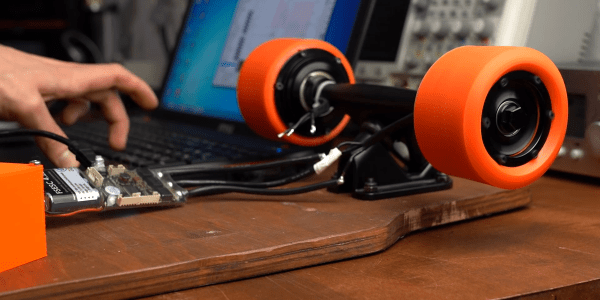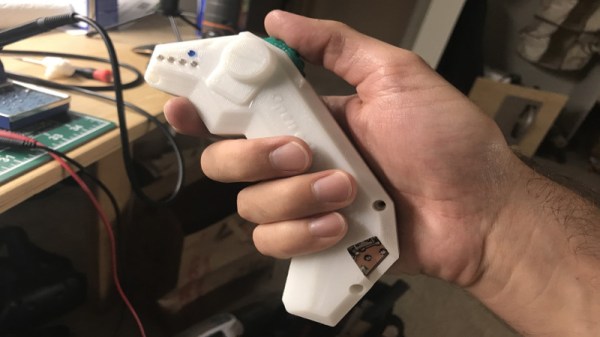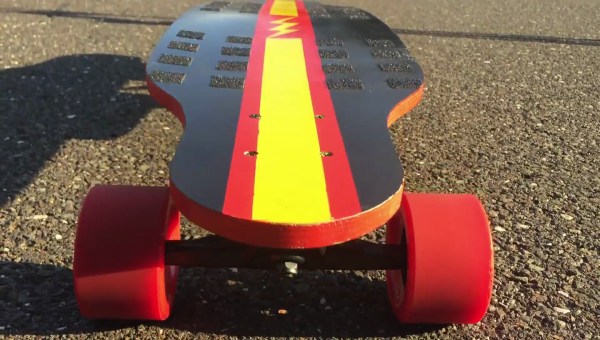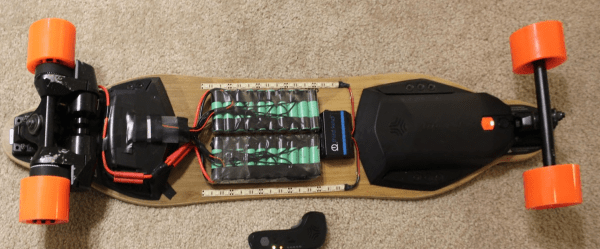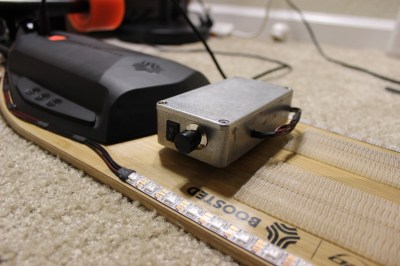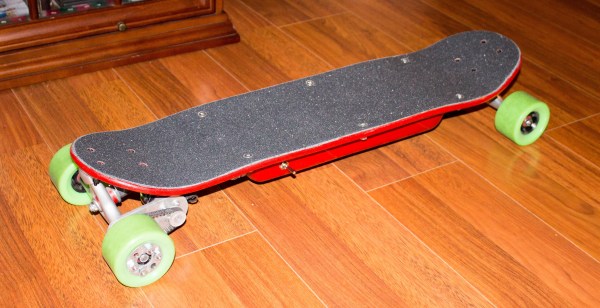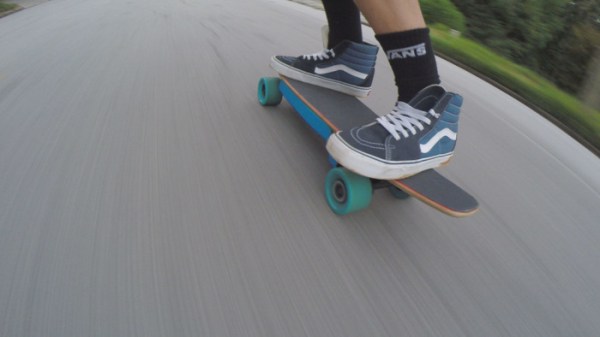Building cool things completely from scratch is undeniably satisfying and makes for excellent Hackaday posts, but usually involve a few unexpected speed humps, which often causes projects to be abandoned. If you just want to get something working, using off-the-shelf modules can drastically reduce frustration and increase the odds of the project being completed. This is exactly the approach that [GreatScott!] used to build the 3rd version of his electric longboard, and in the process created an excellent guide on how to design the system and selecting components.
Previous versions of his board were relatively complicated scratch built affairs. V2 even had a strain gauge build into the deck to detect when the rider falls off. This time almost everything, excluding the battery pack, was plug-and-play, or at least solder-and-play. The rear trucks have built in hub motors, the speed controllers are FSESC’s (VESC software compatible) and the remote control system is also an off the shelf system. All the electronics were housed in 3D printed PETG housing, and the battery pack is removable for charging. We just hope the velcro holding on the battery pack doesn’t decide to disengage mid-ride.
The beauty of this video lies in the simplicity and how [GreatScott!] covers the components selection and design calculations in detail. Sometimes we to step back from a project and ask ourselves if reinventing is the wheel is really necessary, or just an excuse to do some yak shaving. Electric long boards are extremely popular at the moment, you can even make a deck from cardboard or make a collapsible version if you’re a frequent flyer.

